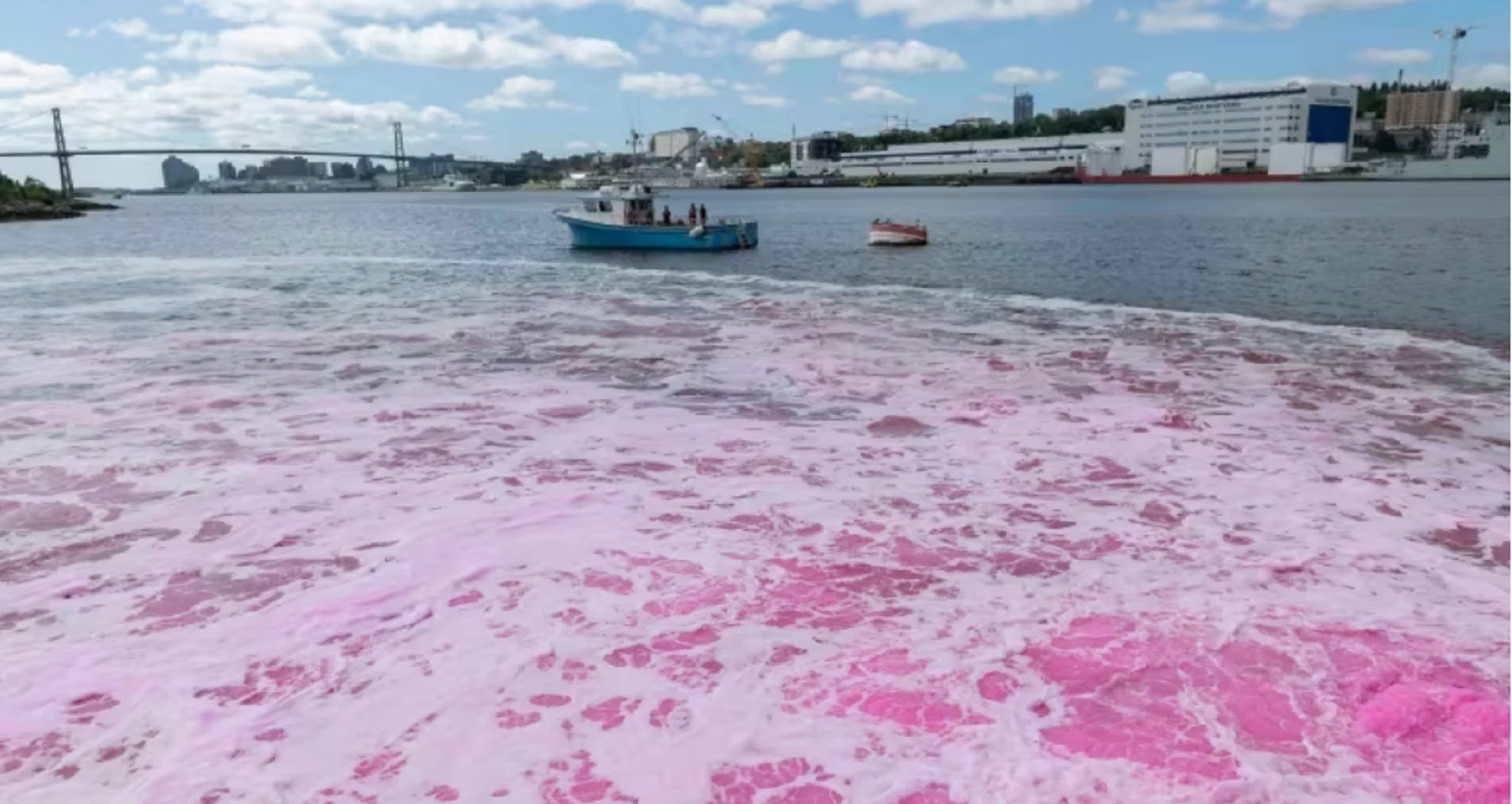
Dyeing the Halifax harbour pink to help fight climate change
Some parts of the Halifax harbour turned a bright shade of pink on Thursday — for science.
Researchers with Dalhousie University added pink fluorescent dye to Nova Scotia Power's Tufts Cove Generating Station in Dartmouth, so the colour can be tracked as it moves through the harbour over the next couple of days.
It's part of an experiment that could one day help the ocean better absorb carbon dioxide.
"This is only a small bit, actually, in a much bigger research endeavour," Katja Fennel, an oceanographer leading the research, told CBC Radio's Maritime Noon on Thursday.
"The ultimate goal here is to test an idea for a technology that would help us reduce atmospheric CO2 and could be one tool in the toolbox for fighting climate change, basically."
MUST SEE: The 'start of a horror movie?' Mysterious orb found on deep sea expedition
Fennel said the experiment began Thursday morning, when about 500 litres of dye, which is water soluble and safe, was added to the cooling water outfall of the generating station.
Boats, drones and underwater robots were then deployed to map the movement of the dye, so researchers can understand where materials spread and how quickly they do so.
Fennel said this information will be used in September when Dartmouth-based company Planetary Technologies adds alkaline material into the water.
"It turns out that the ocean has this great capability to permanently and safely store CO2, because it is slightly alkaline, and so that's the reason why the ocean already holds tremendous amounts of CO2 — 50 times as much CO2 as is in the atmosphere," she said.
Fennel said the company wants to add more alkaline material as a way to increase carbon dioxide absorption in the ocean, rather than it being absorbed in the atmosphere.
She said more dye will be added to the water outfall with the alkaline next month, so more tracking can be done.
"In order to credibly claim that this is a potential tool to help mitigate CO2 in the atmosphere, we need to measure it and accurately verify and quantify how much CO2 is indeed taken up," she said.

The research team was on a boat in the Halifax harbour on Thursday to add sensors underwater to track the dye. (Dalhousie University)
"And so dye allows us to basically say, 'OK, this water has received alkalinity, it should be taking up more CO2 as opposed to a water sample that's taken 500 metres outside of the plume that has not received the alkaline treatment.'"
Fennel compared adding more alkaline to the ocean to someone taking an antacid for acid reflux.
"It's going to be a really big Tums, right, in order to make an effect, and so we're not at that scale here at all," she said. "This is just an initial research research trial, but that's the idea."
Fennel said this is important research that will hopefully reduce emissions in the atmosphere.
"Ocean alkalinity enhancement has the greatest potential, actually, in terms of storing carbon permanently and safely at a scale that is relevant for global climate," she said.
"That's why it's really exciting and really exciting that a Halifax company and Halifax research team here are at the cutting edge of world-leading research."
This article was written for the CBC by Cassidy Chisholm. Header image: Dalhousie University.










